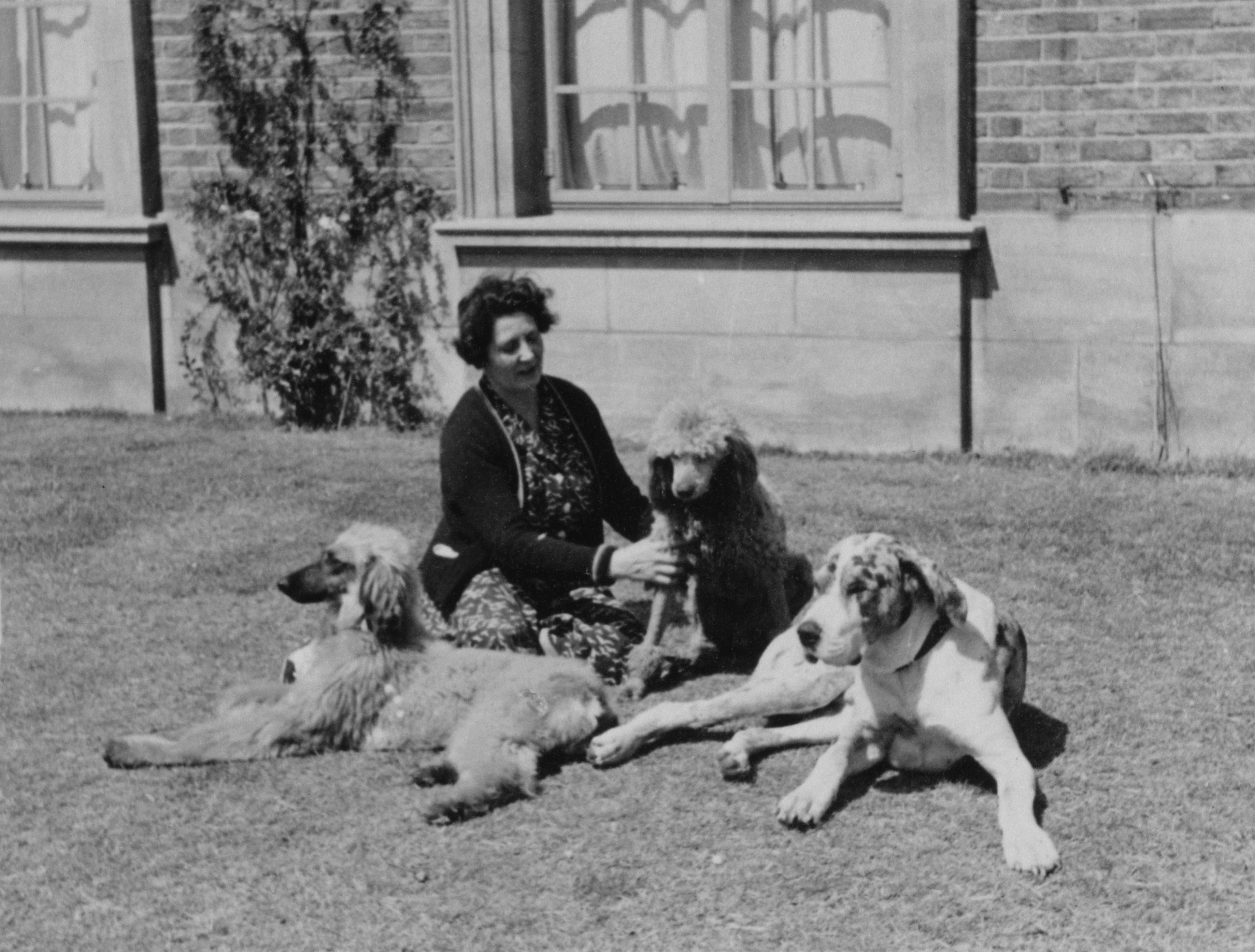Lady Virginia Courtauld
Who was Eltham Palace's 20th-century lady of the house?
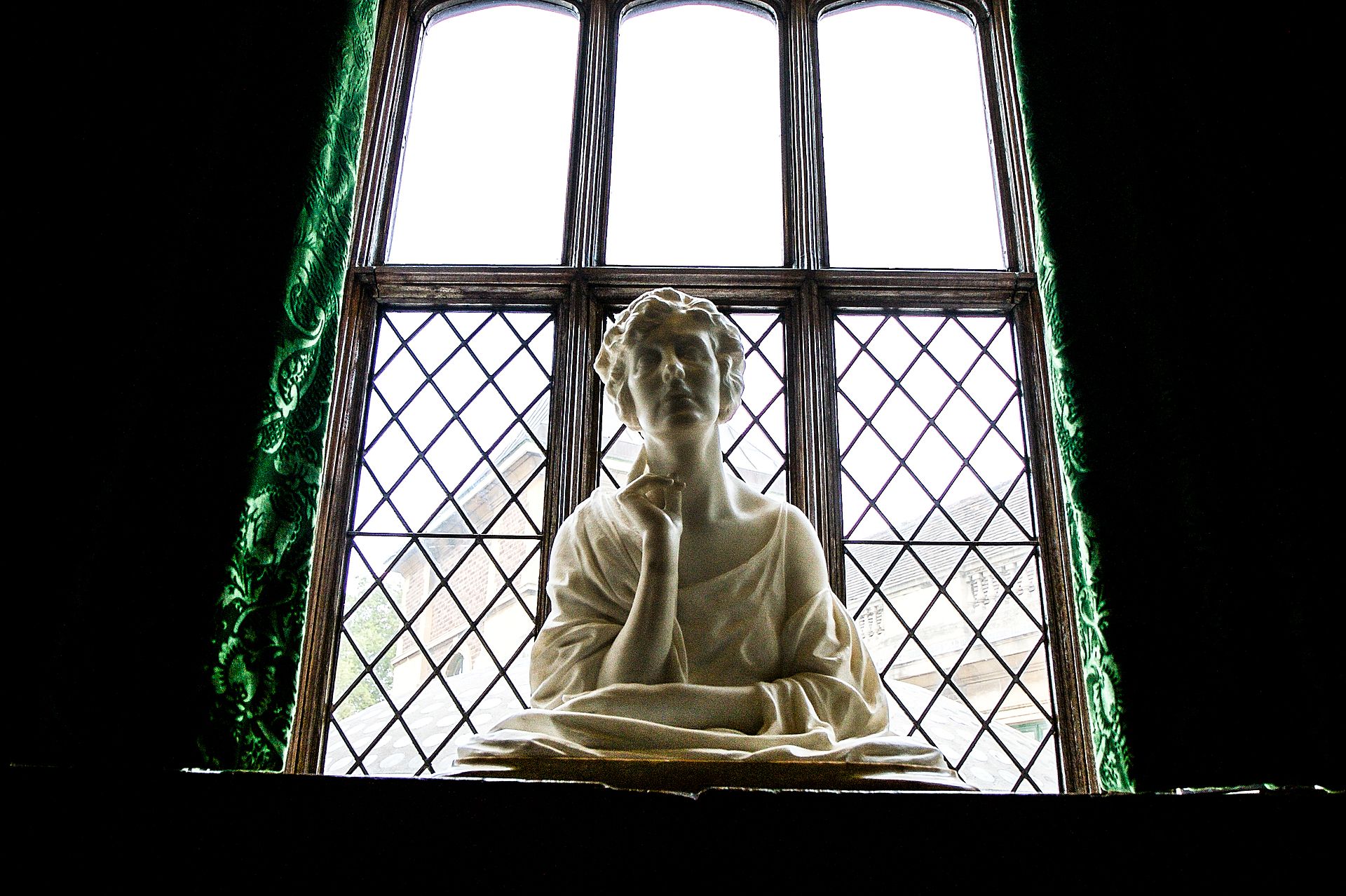
Lady Virginia Courtauld lived life on her own terms. She was a wealthy socialite, art-lover and philanthropist and was cherished among her intimate circles for being "full of character and life."
While living at Eltham Palace during the tumultuous 1930s, Virginia worked hard to cultivate an esteemed reputation. But her eccentric tastes, outspoken tendencies and mystifying snake tattoo alluded to a more rebellious and unconventional streak.
In this article Louisa Treger, author of The Dragon Lady, delves into the spirited life of Virginia Courtauld and her time at Eltham Palace.
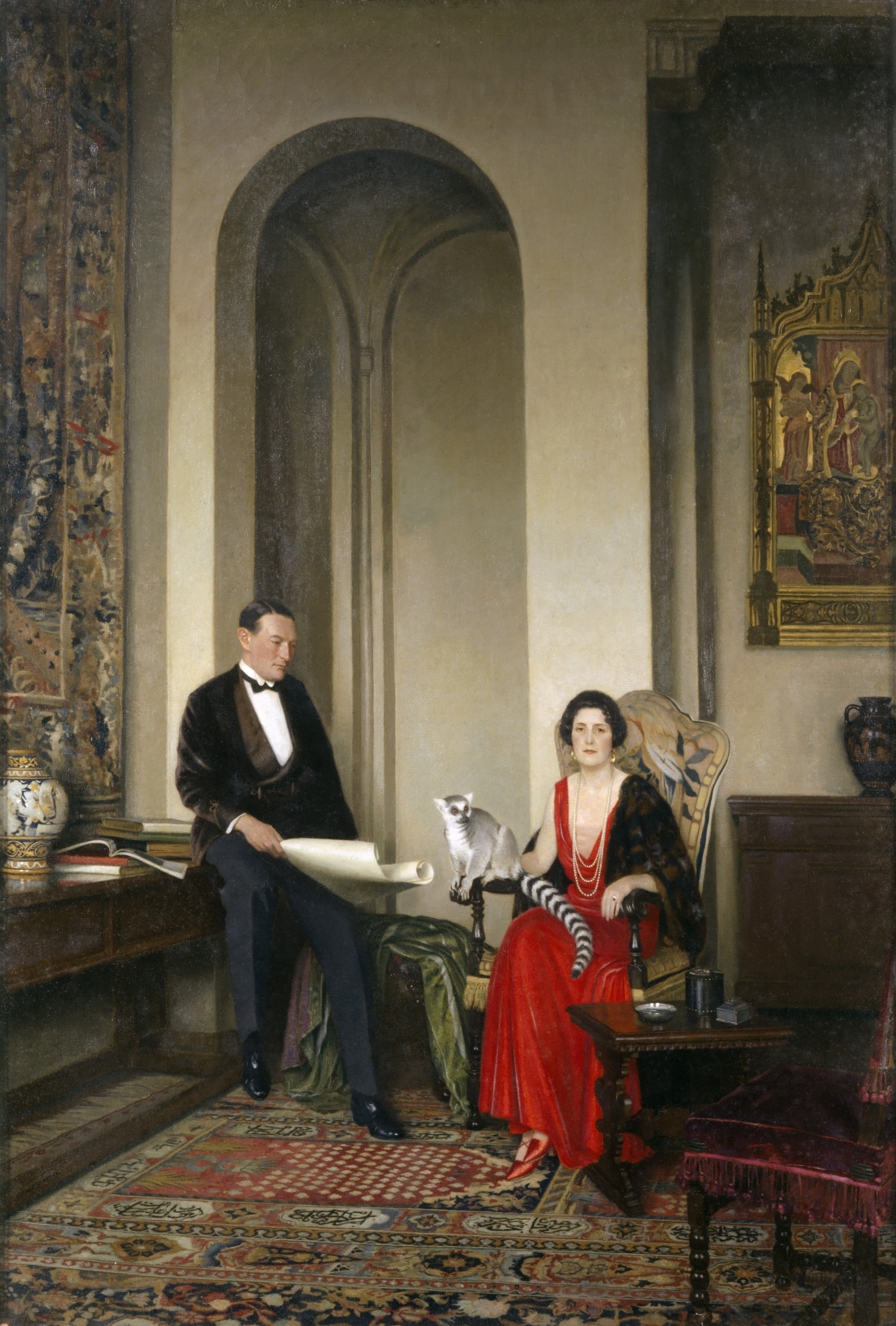
A rebel from the beginning
Virginia, or Ginie as she was often known, was born in Romania around 1883. She was the youngest child of an affluent Italian shipping merchant, Riccardo Peirano, and Rosa Balint, a Romanian peasant.
Riccardo and Rosa did not marry until after the births of their children. It's not known why, but perhaps social and national differences constituted significant obstacles. Virginia’s rebellious streak may partly have stemmed from her background, which was unconventional for the time.
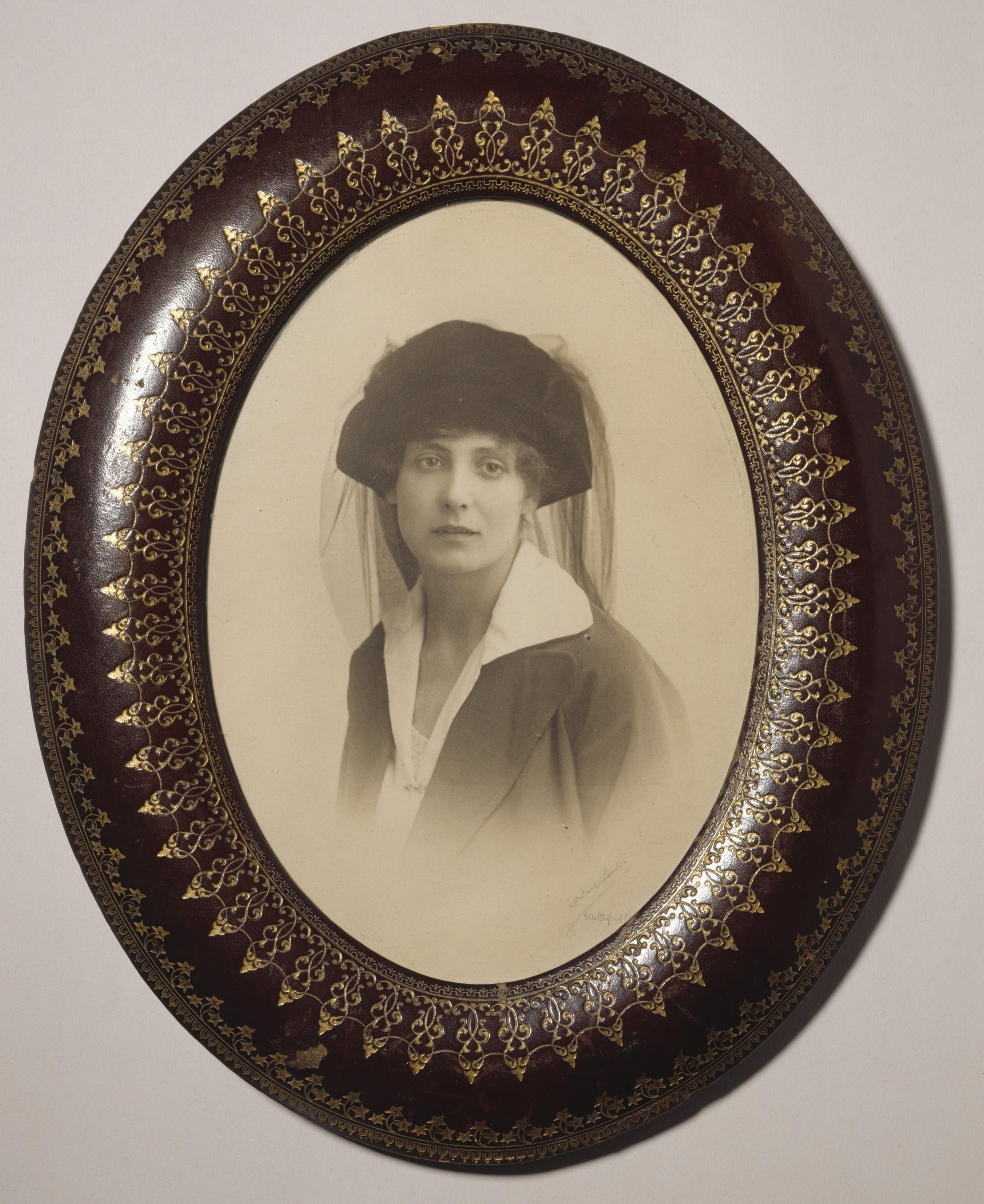
Virginia Courtauld c1923 © Historic England Archive.
Virginia Courtauld c1923 © Historic England Archive.
Virginia grew up in London in the formative years of the 20th century, and her school days provided an early glimpse at her mischievous nature. First she was caught putting mice under the nuns' habits at her convent school and then, in her late teens, a heavily inked snake was tattooed on her leg from ankle to thigh. This would have been a shocking act for a young girl in Edwardian society but the reason behind it was never known, due to Virginia’s inclination to give a different story each time she was asked about it. At different times she explained it was a teenage dare, a coded message for a lover and a membership badge to a secret society.
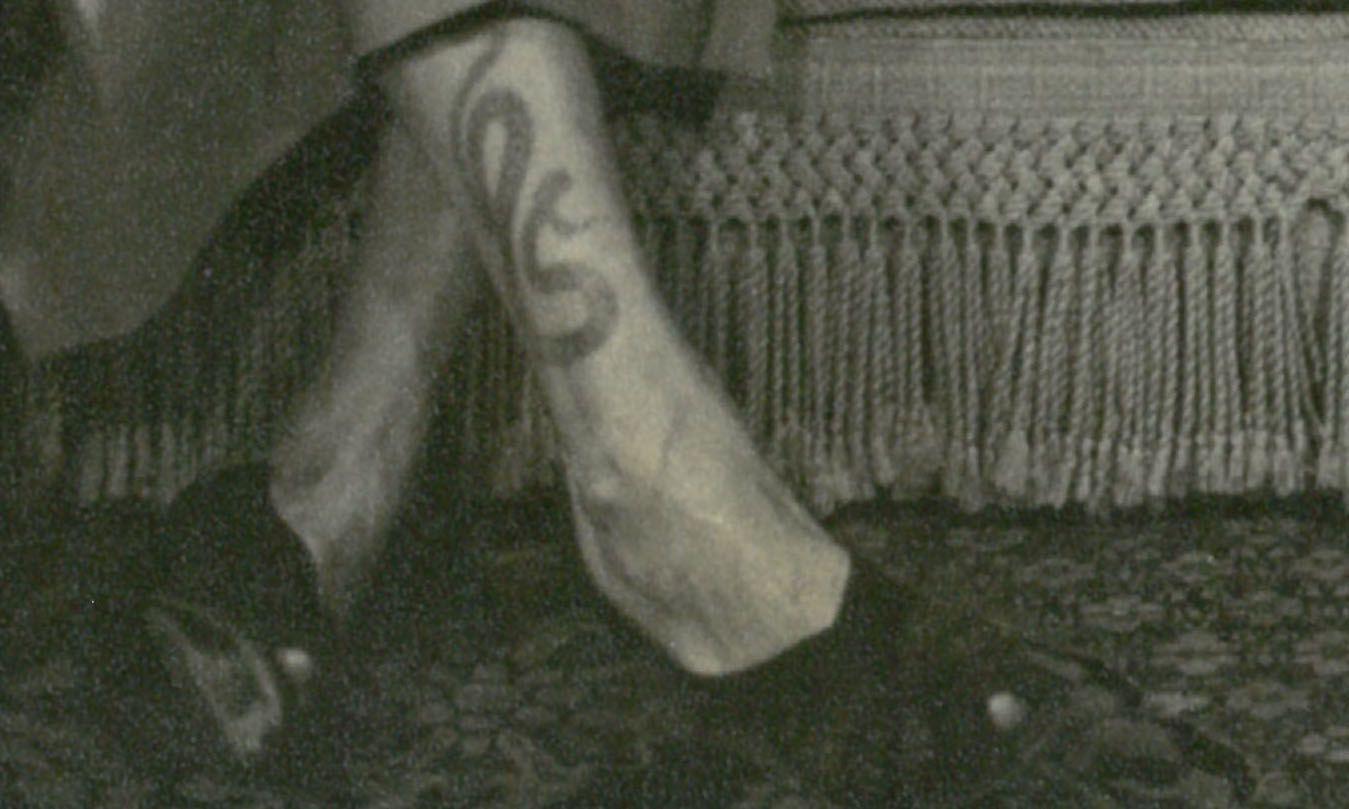
Virginia's snake tattoo © Private collection.
Virginia's snake tattoo © Private collection.
Rebellion seems to be a theme that continued throughout Virginia's life. Among her other exploits, Virginia was observed racing cars at Brooklands dressed as a man in order to be allowed to drive and flirting with minor Italian royalty.
Virginia's niece, Margaret Bernard, remembers her disregard for social norms, but says she had "enormous charm".
“She was full of character and life," she said. "She didn’t care what she said to anyone, or what she did.”

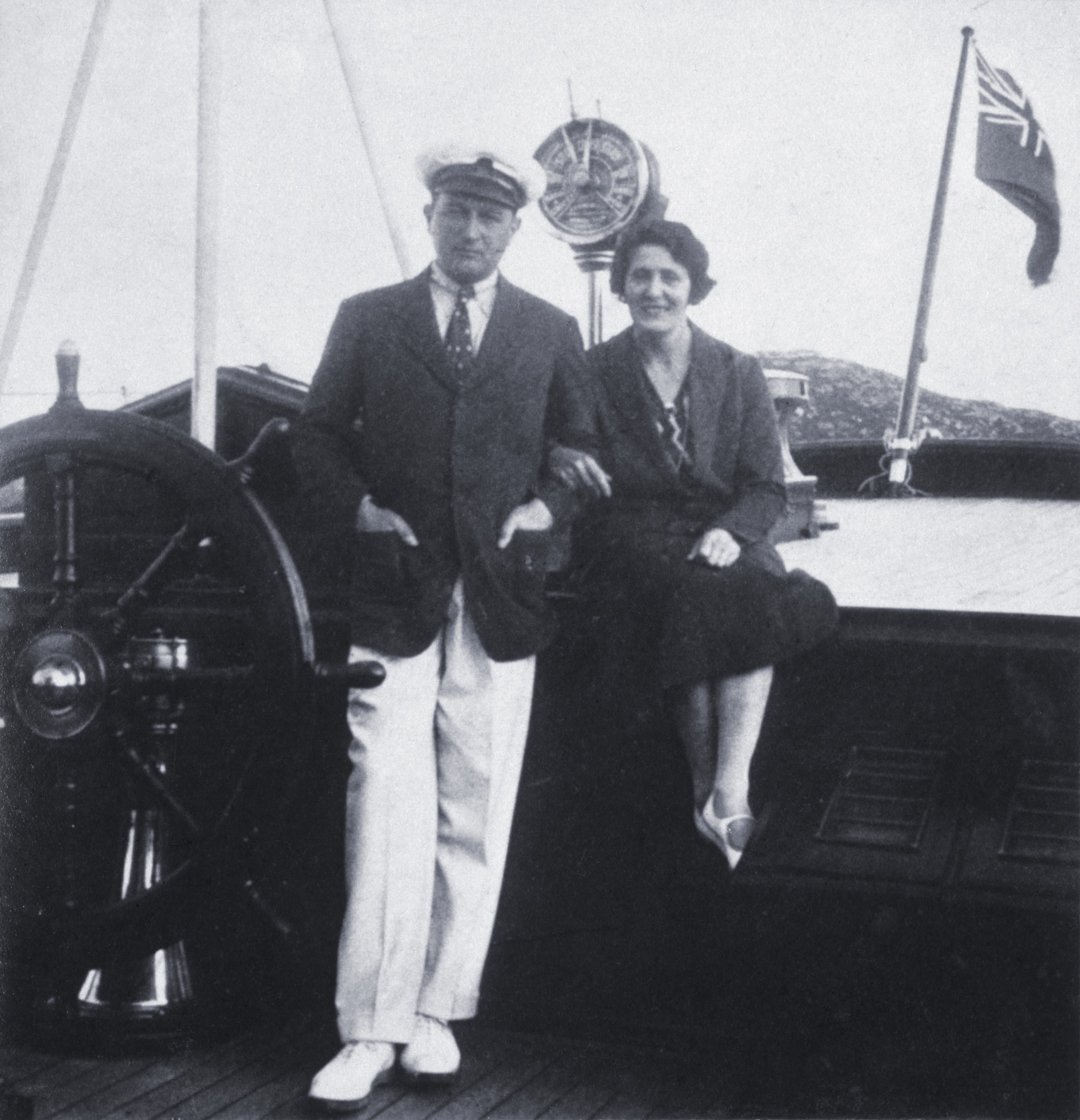

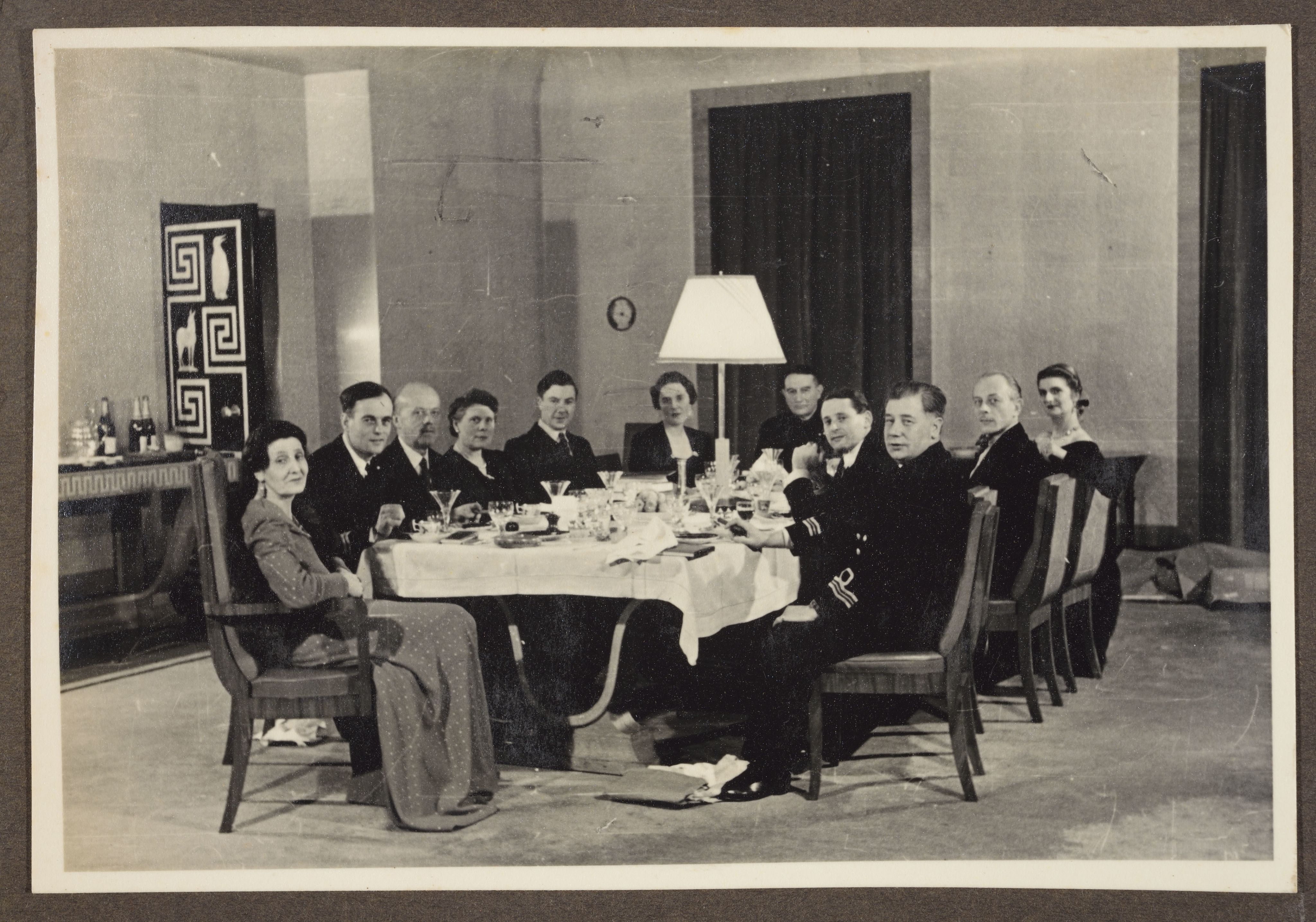

Stephen and Virginia Courtauld © Historic England Archive.
Stephen and Virginia Courtauld © Historic England Archive.

Virginia's snake tattoo © Private collection.
Virginia's snake tattoo © Private collection.

Virginia Courtauld and guests at Eltham Palace for Christmas in 1942 © Private collection.
Virginia Courtauld and guests at Eltham Palace for Christmas in 1942 © Private collection.
Virginia, the Italian Countess
At 24, Virginia married an Italian Count, Paulo Spinola, the second son of one of the oldest and most eminent families in Genoa. But the Spinolas’ wealth was declining, and it seems likely that they accepted their wayward daughter-in-law because she brought with her a large dowry.
However, Virginia struggled to fit into the conventional, rulebound Spinola household. She found herself closely monitored by her in-laws and their servants, by the Church and by wealthy society. A 2017 biography of Virginia published in Italian details the ways in which her behaviour displeased the Spinolas.
They disapproved of her smoking, shopping excessively, eating at expensive restaurants and gambling, often unsuccessfully, on poker and bridge. She felt increasingly suffocated and, in 1919, after eight years of marriage, the couple separated.

Meeting Stephen Courtauld
Later that year, while on holiday in the Italian Alps, Virginia met Stephen Courtauld, the youngest brother of Samuel who was founder of the Courtauld Institute of Art, and an heir to a textile empire. Stephen was a keen mountaineer, historian and a collector. He was also fresh from serving in the trenches in the First World War, for which he had won a Military Cross. Stephen had a reserved, serious manner, which fascinated Virginia.
“Stephen sat on my right and didn’t utter a word for a long time,” Virginia said later.
“At last, I asked him, ‘Don’t you ever speak?’ He looked up quickly and gave his wonderful smile. I suppose you could say that was the start of our courtship. It was for me, anyway.”
Stephen would later describe Virginia as the sun that melted his cold exterior.
Stephen paid the Vatican to annul Virginia's previous marriage and the couple wed on August 20, 1923, in Fiume, Italy. Despite – or perhaps because of – their differences, the union between the reflective, scholarly Stephen and the spirited, outspoken Virginia was a happy one. They lived at 47 Grosvenor Square in London and toured the world in a magnificent yacht that Stephen commissioned and named The Virginia.

Stephen and Virginia Courtauld on the deck of The Virginia in 1930 © Historic England Archive.
Stephen and Virginia Courtauld on the deck of The Virginia in 1930 © Historic England Archive.
They were patrons of the arts: Stephen was financial director of Ealing Studios, a trustee of the Royal Opera House in London's Covent Garden, and provided financial support for the Courtauld Galleries in Cambridge’s Fitzwilliam Museum.

A new home at Eltham Palace
By the 1930s, the Courtaulds had decided that they wanted a country house within easy reach of London, so they took a 99-year lease on Eltham Palace, which is now in the care of English Heritage. Here they were allowed to build on condition that they restored the Great Hall, which was all that remained of the original Tudor palace that had been destroyed by the Puritans in the 1650s.
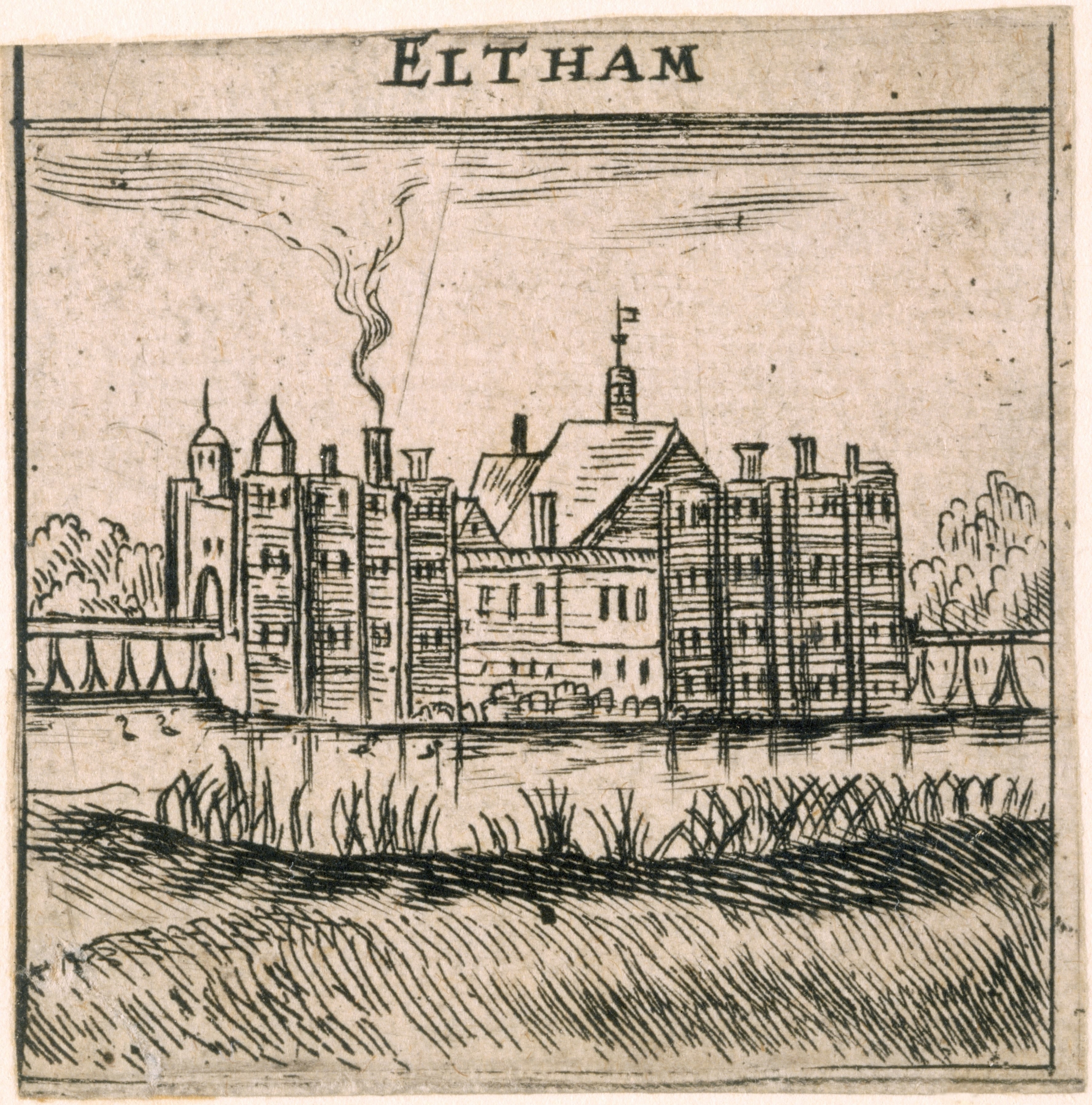
Eltham Palace just before major demolitions in 1650 © Historic England Archive.
Eltham Palace just before major demolitions in 1650 © Historic England Archive.
After renovating the hall, the Courtaulds built an ultra-modern extension onto the medieval remains with the help of architects John Seely and Paul Edward Paget. Its English Renaissance-style exterior of soft-coloured brick and Clipsham stone was designed to blend in with the hall, yet there was a modern, municipal feel to it because Stephen had visited and liked the Stockholm City Hall, designed by architect Ragnar Östberg.
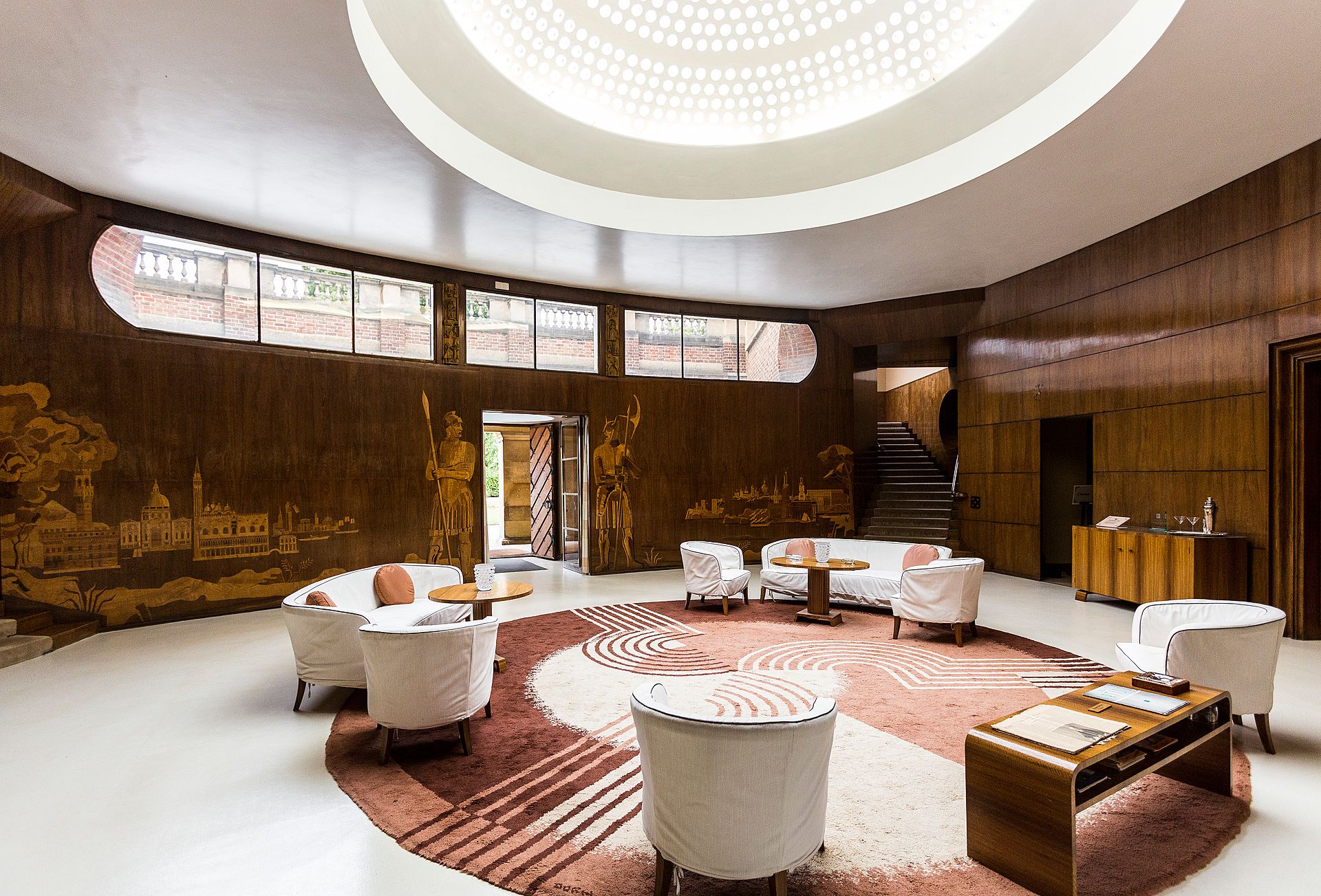
The Entrance Hall inside Eltham Palace.
The Entrance Hall inside Eltham Palace.
The interior was eclectic in style, but undisputedly glamorous. Its main designer was Marchese Peter Malacrida, with Rolf Engstromer designing the modernist Entrance Hall. Elements of the interior were also furnished by the world’s finest contemporary craftspeople and decorators including Gilbert Ledward, Charles Jagger and Marion Dorn. Each bedroom had built-in furniture and an ensuite bathroom. Virginia’s bathroom was particularly elaborate and something of a signature, with onyx-lined walls and a statue of Psyche above a marble bath, which was set in a Byzantine recess of gold mosaic.
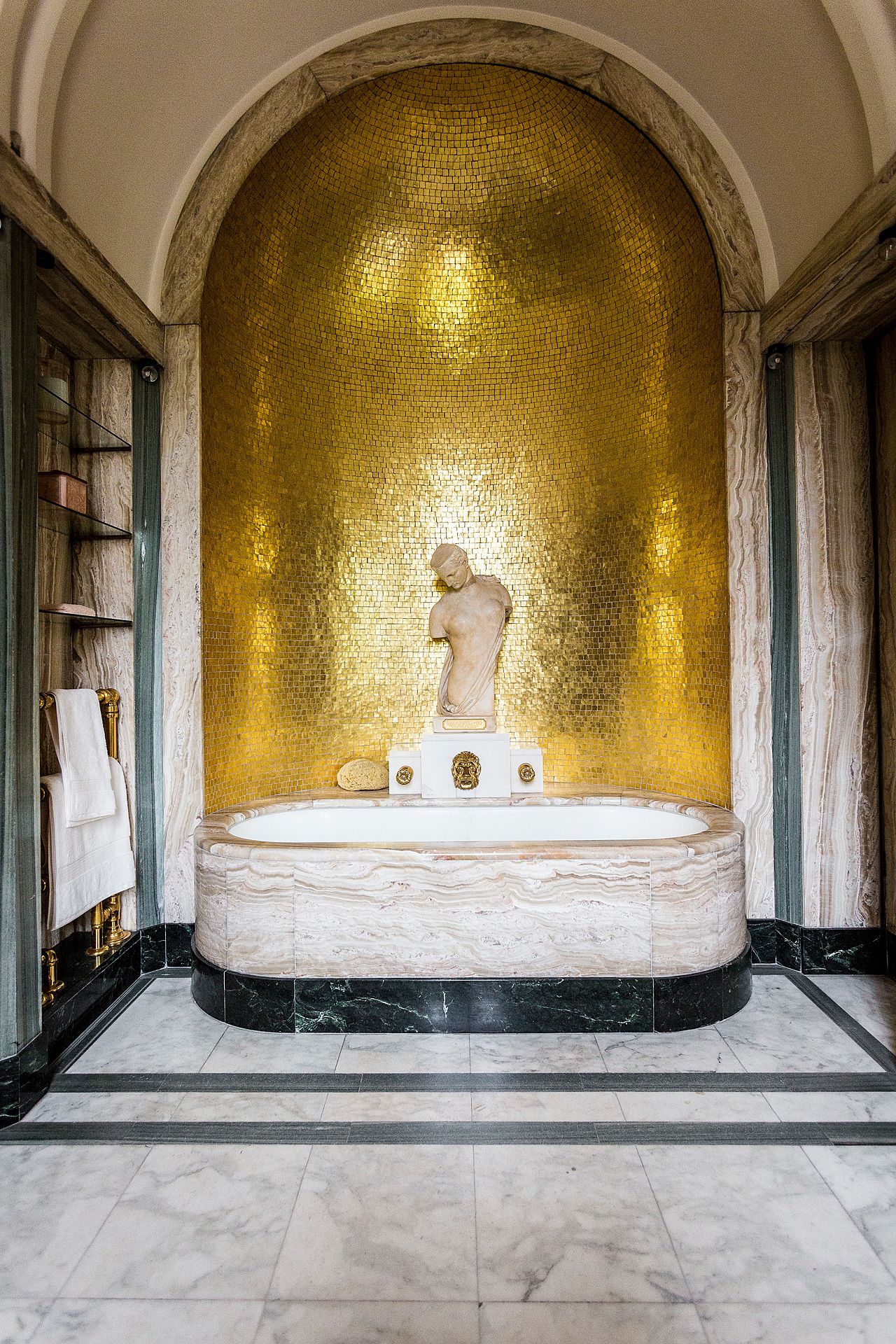
Virginia's bathroom at Eltham Palace.
Virginia's bathroom at Eltham Palace.
The technology at Eltham was as advanced as the design. There were synchronised electric wallclocks, loudspeakers for music, a centralised vacuum-cleaner, and a custom-made internal telephone system.
The Courtaulds became known for their extravagant entertaining. Among their guests were mountaineer, writer and secret agent Freddy Spencer Chapman, film director Michael Balcon, and politicians Rab Butler and Leo Amery, as well as sports stars and royalty including Queen Mary and the late Queen Mother, then Duchess of York.
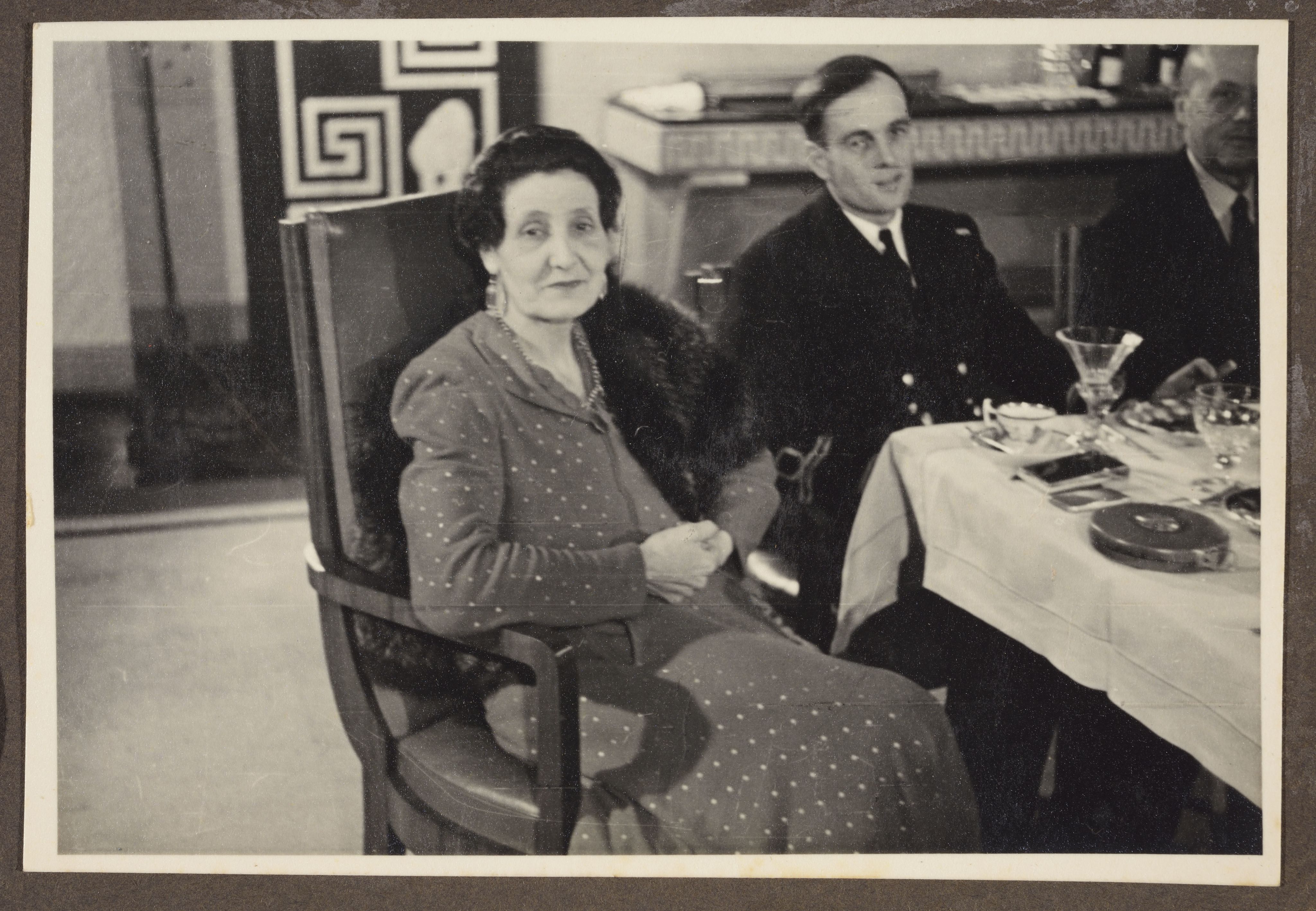
Virginia and August Courtauld, who was an arctic explorer, yachtsman and Stephen's cousin © Private collection.
Virginia and August Courtauld, who was an arctic explorer, yachtsman and Stephen's cousin © Private collection.
It's unclear what society made of their hostess: a tattooed, divorced foreigner accustomed to saying whatever popped into her head. Eyebrows must have been raised, although Stephen’s wealth and philanthropy probably went some way towards compensating for his wife’s eccentricities.
Virginia tended to mix guests indiscriminately and, when the conversation grew heated, she would retire to bed claiming a headache.
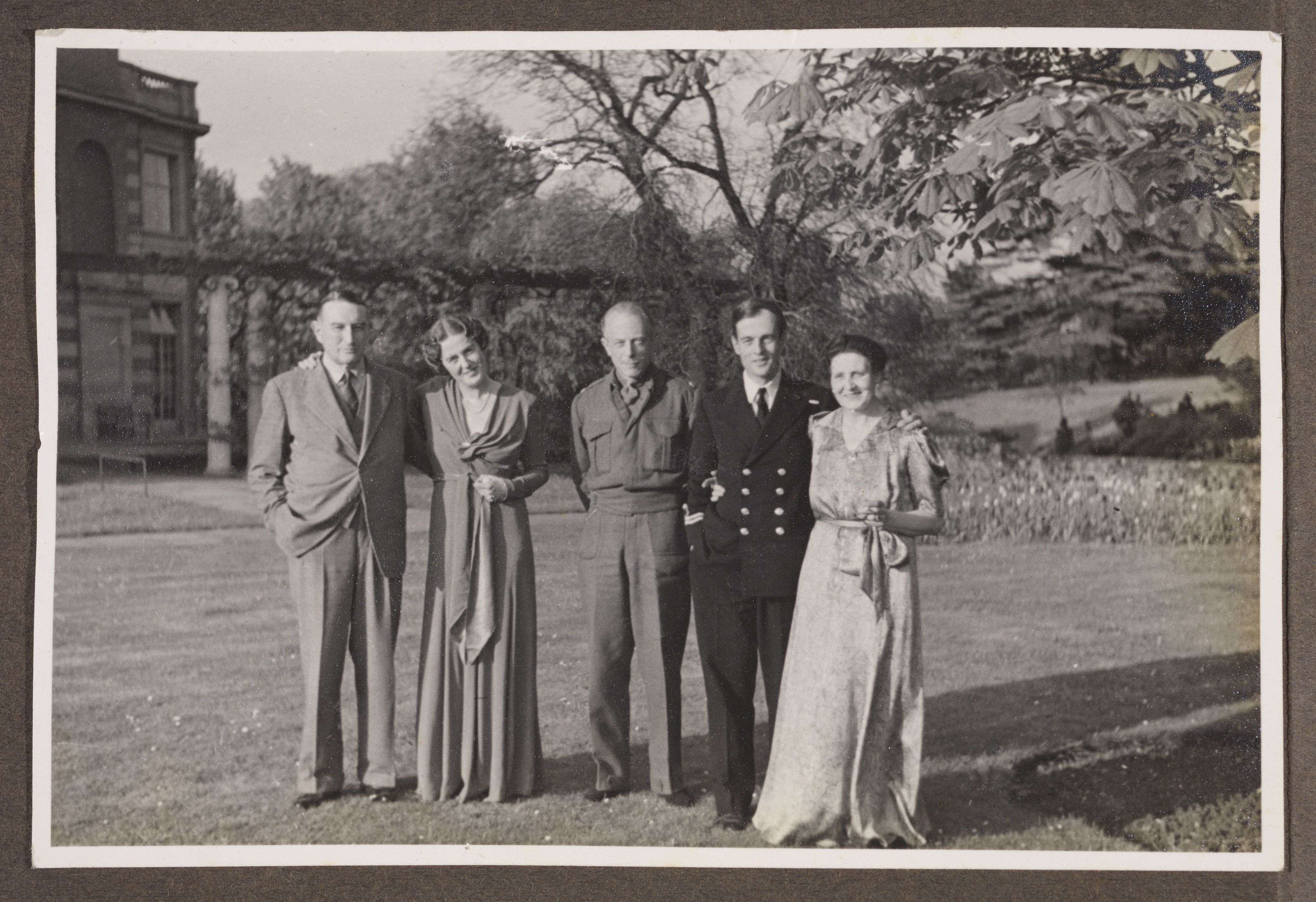
Stephen, Mollie, George, August and Virginia Courtauld at Eltham Palace © Private collection.
Stephen, Mollie, George, August and Virginia Courtauld at Eltham Palace © Private collection.
Virginia was not able to have children, but the couple were surrounded by family and from 1926, they looked after Virginia’s nephews, Peter and Paul Peirano. Virginia also loved animals and kept dogs, a parrot and a ring-tailed lemur bought at Harrods called Mah-Jongg, or Jongy for short. Jongy was much loved, a constant companion for 15 years. During meals he became notorious for scampering under the dining table and biting those guests he disliked.
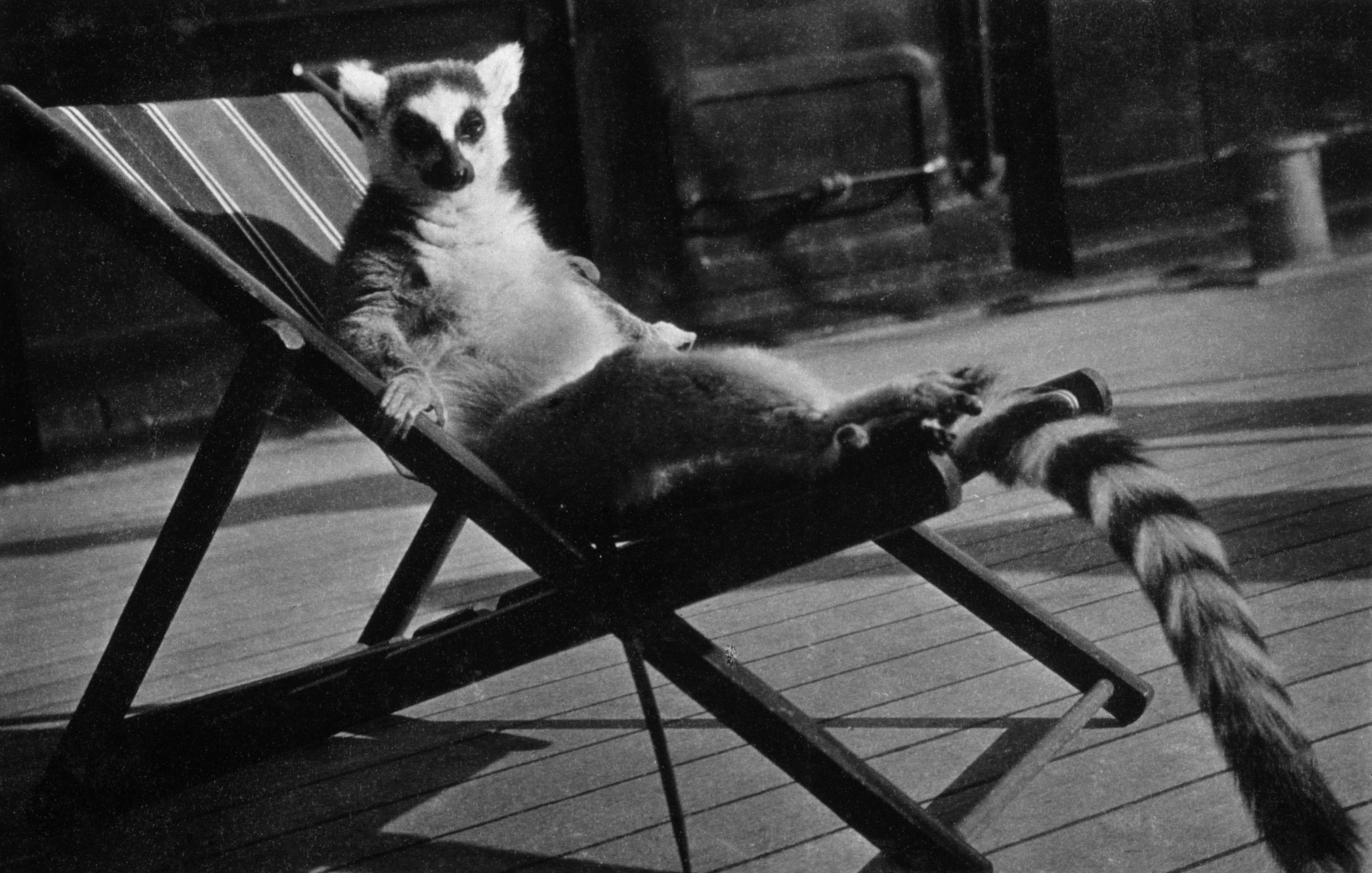
Mah-Jongg on deck of The Virginia in 1930 © Historic England Archive.
Mah-Jongg on deck of The Virginia in 1930 © Historic England Archive.
Background images: Eltham Palace today and Virginia Courtauld and guests at Eltham Palace for Christmas 1942 © Private Collection.


Life in Rhodesia
During the Second World War, Eltham lay on a German bombing path and after it received several direct hits, the Courtaulds moved. First they headed to the west coast of Scotland and then to the Imbeza Valley in Rhodesia, current-day Zimbabwe. There they built La Rochelle, a replica French chateau, and filled it with superb art. They also established a botanic garden, covering 50 acres with exotic plants and trees gathered from all over the world.
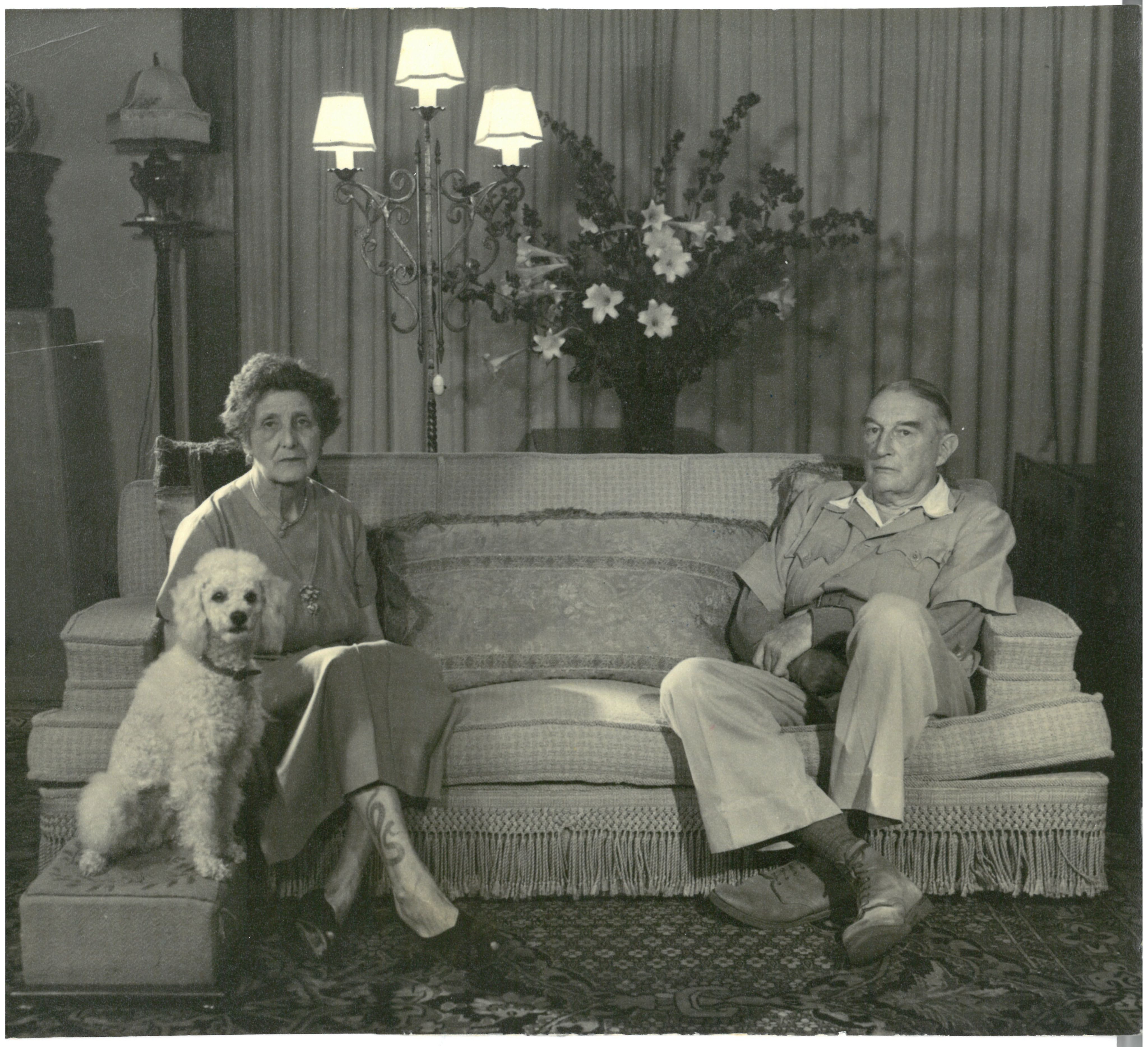
Stephen and Virginia, who is showing the snake tattoo on her right leg, in the parlour of La Rochelle © Private collection.
Stephen and Virginia, who is showing the snake tattoo on her right leg, in the parlour of La Rochelle © Private collection.
They were philanthropic and many projects benefited from their generosity, including the National Gallery in Harare. Stephen was knighted by Rhodesian prime minister, Roy Welensky, for his philanthropy and his contributions to civic life.
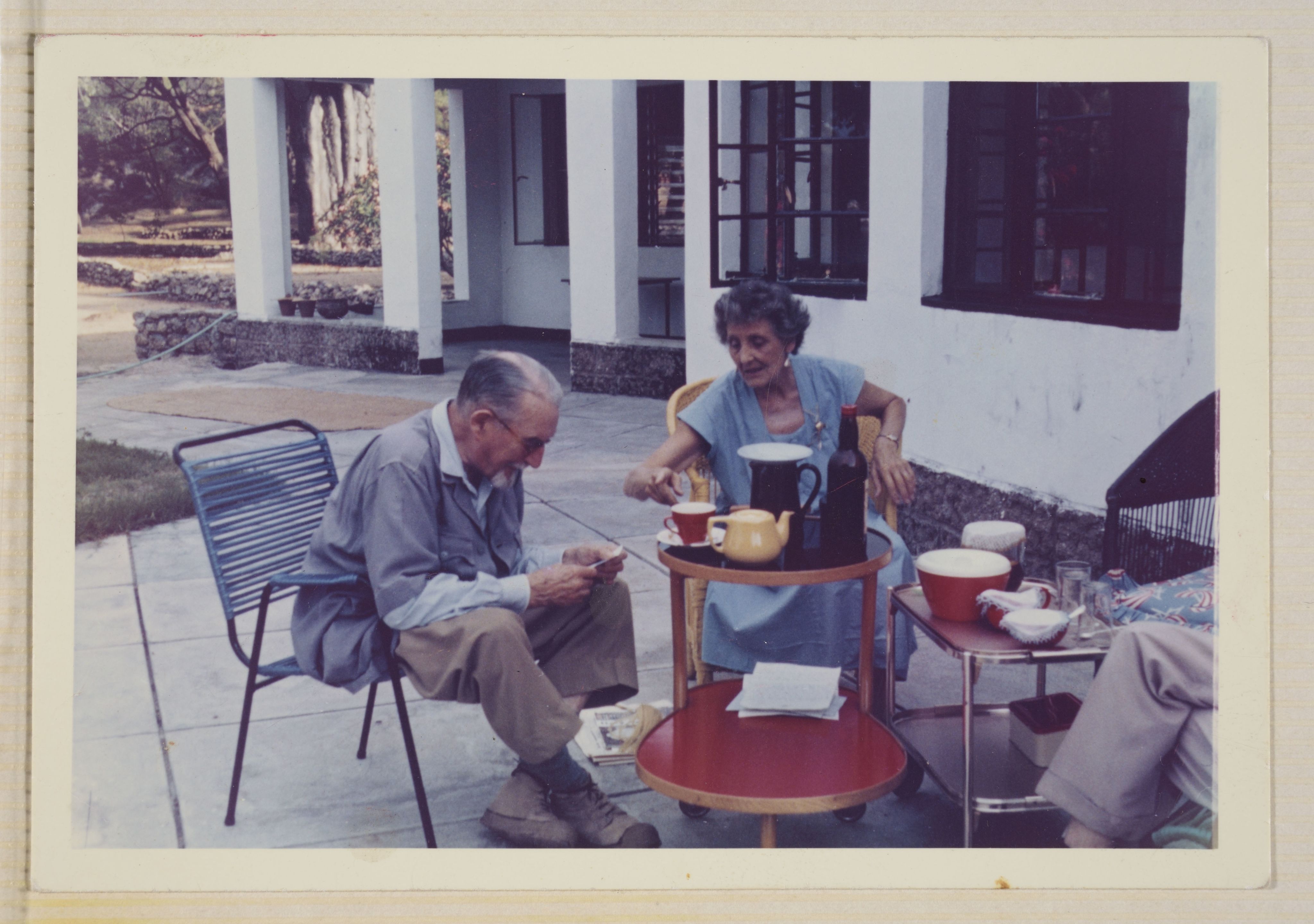
Stephen and Virginia at La Rochelle © Private collection.
Stephen and Virginia at La Rochelle © Private collection.
The Courtaulds were also progressive liberals who wanted a just and equal society. They became involved with the black liberation movement to the extent that the constitution of Robert Mugabe’s ruling party, Zanu-PF, was allegedly drawn up at La Rochelle.
“Ginie and Stephen were like a breath of fresh air,” said Mollie Butler, a Courtauld cousin by marriage. “They received every new idea with enthusiasm and made me realise how important it was not to go on doing what your parents had always done, thinking what they’d always thought.”
Background image: Virginia and Stephen Courtauld at their house, La Rochelle, in the 1950s © Allan Cash Picture Library and Alamy Stock Photo and Virginia with her dragon tattoo at La Rochelle © Private collection.
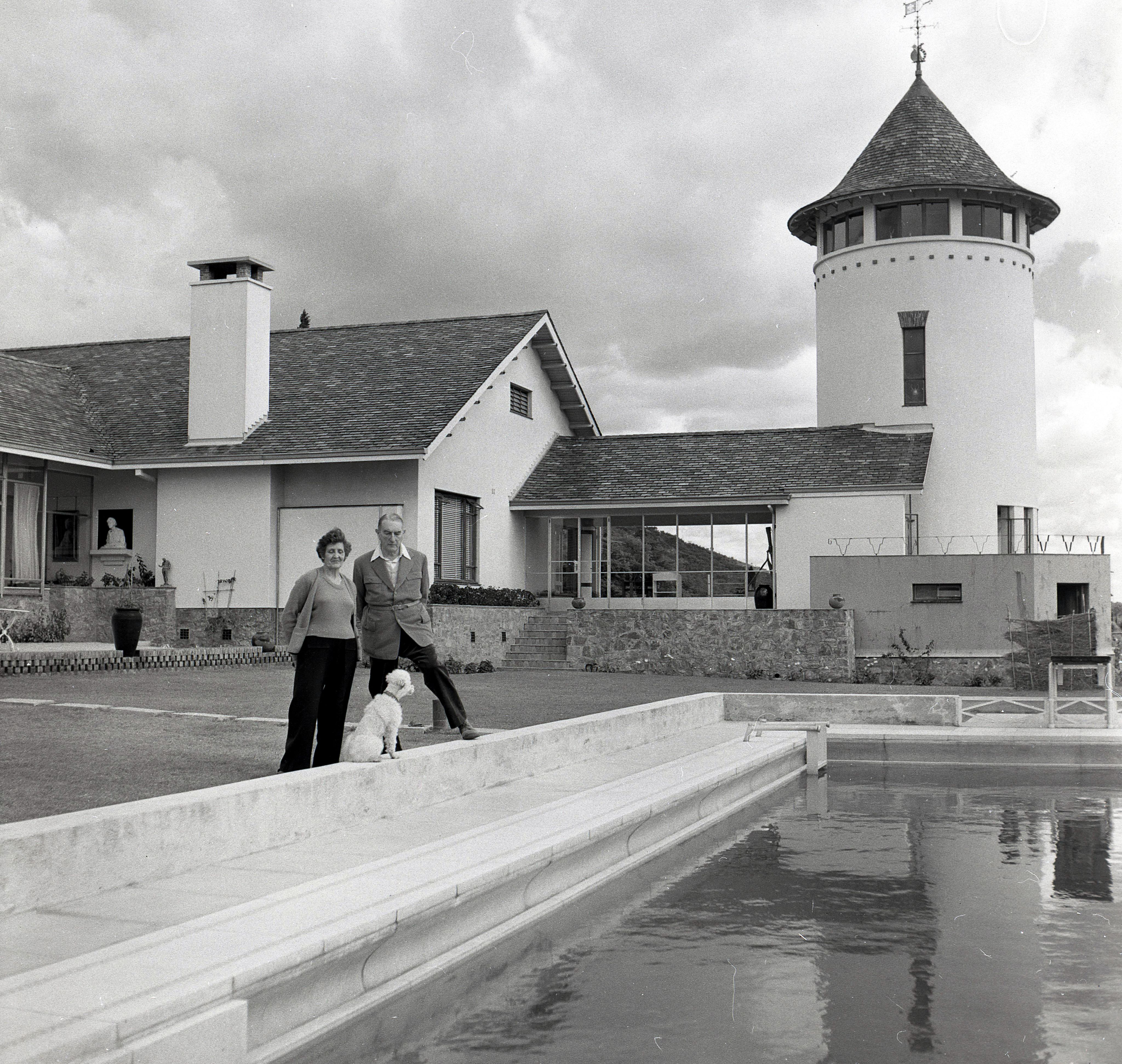

Virginia: the later years and legacy
Despite living a life that seemed to be filled with privilege, Virginia’s glamorous exterior hid darkness and pain. Because of her flamboyance and her progressive views, she never quite fitted in, yet she had a keen desire to belong. She was restless and suffered from depression.
As Virginia and Stephen grew older, they became increasingly isolated. Stephen passed away first, in 1967, aged 83. His leg was amputated above the knee following blood circulation problems caused by untreated diabetes – a dreadful fate for a man who had loved to climb mountains. Not long afterwards he lost his other leg and with it, the will to live.
“He lasted less than 24 hours (after the amputation of his second leg),” said Virginia's niece, Margaret Bernard. “It shook Virginia a lot. I think she was surprised at how much she missed him.”
In January 1970, Virginia suffered a stroke, which destroyed her memory. She moved to Jersey to be with relatives and died two years later, a beguiling and unforgettable figure to the end.
Today, Eltham Palace pays homage to her eclectic tastes and is an enduring monument to her stylish and extraordinary life.
Background image: Virginia with her dogs Kais, Solfo and Caesar c1940 © Cozens Collection and Historic England Archive.
